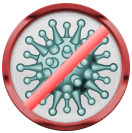The many ways sewage surveillance is helping fight COVID
Wastewater tracking was used before the pandemic to monitor for polio and illicit drug use, but interest in the field and its applications has now ballooned.
From the subarctic community of Yellowknife, Canada, to the subtropical city of Brisbane, Australia, scientists in more than 50 nations are now monitoring the spread of SARS-CoV-2 in sewage. The number of sewage-surveillance programmes tracking COVID-19 has exploded during the past year from a dozen or so research projects to more than 200, following the discovery that whole virus particles and viral fragments are shed in faeces.
The information garnered is helping scientists to track down cases, predict surges, identify where to target testing, and estimate overall numbers of infected people in cities or regions. Although sewage surveillance has been used for several decades to identify polio outbreaks and target immunization programmes, and, more recently, to detect illicit drug use, the pandemic has brought new focus and investment in it as a means of tracking public health.
Early-warning system
One common application of such surveillance programmes is as an early-warning system. People who are infected start shedding virus fragments a few days before they show symptoms, and de Roda Husman uses this to predict hospitalization numbers a few days ahead of time.
Other groups are using wastewater to find and suppress outbreaks on a much smaller scale. At the University of California, San Diego, scientists test wastewater from 343 buildings around campus to check for signs of infection. Whenever a sample comes back positive, the university sends targeted messages to encourage students housed in affected buildings to get tested and isolate.
“You just can’t afford to test 10,000 students each day,” says Smruthi Karthikeyan, an environmental engineer at the university. Wastewater tracking provides a cheap and effective alternative, catching up to 85% of cases on campus.
A similar system is in use in Hong Kong, where signs of SARS-CoV-2 in the wastewater of two apartment buildings led to mandatory testing of all residents in January. According to the South China Morning Post, the early-warning system helped health officials to find nine asymptomatic cases.
Passive Samplers
Instead, Australian scientists have turned to other methods of sampling. ‘Passive samplers’ use gauze or another absorbent material that can be left in wastewater for up to four days, increasing the likelihood of its picking up virus fragments from that one-in-a-million case.
Elsewhere, governments and institutions have adapted pre-existing wastewater-tracking methods to monitor larger trends in the numbers of cases across cities and neighbourhoods. One country leading the charge is the Netherlands.
Samples from wastewater-treatment plants allow researchers there to estimate how many people in large populations are infected with SARS-CoV-2, and government officials use these estimates to make decisions about whether to implement lockdowns and how to channel resources.
Read The Entire Article >>





